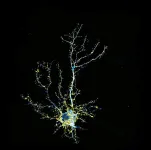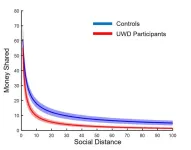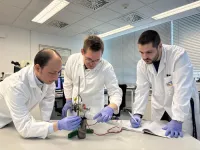(Press-News.org) Is sauerkraut more than just a tangy topping? A new University of California, Davis, study published in Applied and Environmental Microbiology suggests that the fermented cabbage could help protect your gut, which is an essential part of overall health, supporting digestion and protecting against illness.
Authors Maria Marco, professor with the Department of Food Science and Technology, and Lei Wei, a postdoctoral researcher in Marco’s lab, looked at what happens during fermentation — specifically, how the metabolites in sauerkraut compared to those in raw cabbage.
Researchers tested whether sauerkraut’s nutrients could help protect intestinal cells from inflammation-related damage. The study compared raw cabbage, sauerkraut and the liquid brine left behind from the fermentation process. The sauerkraut samples included both store-bought products and fermented cabbage made in the lab.
They found that sauerkraut helped maintain the integrity of intestinal cells, while raw cabbage and brine did not. Marco said that there was also no noticeable difference between grocery store sauerkraut and the lab-made version.
“Some of the metabolites we find in the sauerkraut are the same kind of metabolites we're finding to be made by the gut microbiome, so that gives us a little more confidence that this connection we found between the metabolites in sauerkraut and good gut health makes sense,” Marco said. “It doesn't matter, in a way, if we make sauerkraut at home or we buy it from the store; both kinds of sauerkraut seemed to protect gut function.”
Digestive benefits
Chemical analysis shows that fermentation changes cabbage’s nutritional profile, increasing beneficial metabolites such as lactic acid, amino acids and plant-based chemicals linked to gut health. These changes may explain why fermented foods are often associated with digestive benefits.
Marco said she and Wei identified hundreds of different metabolites produced during fermentation and are now working to determine which ones play the biggest role in supporting long-term gut health.
“Along with eating more fiber and fresh fruits and vegetables, even if we have just a regular serving of sauerkraut, maybe putting these things more into our diet, we'll find that can help us in the long run against inflammation, for example, and make our digestive tract more resilient when we have a disturbance,” Marco said.
Fermented vegetables and foods are already a staple in many diets, but this research suggests they could be more than just a flavorful side dish. Marco said the next step is to conduct human trials to see if the gut-protective metabolites found in sauerkraut can have the same positive effects when included in everyday diets, as was shown in the lab.
“A little bit of sauerkraut could go a long way,” she said. “We should be thinking about including these fermented foods in our regular diets and not just as a side on our hot dogs.”
This research was funded by a grant from the California Department of Food and Agriculture, as well as a Jastro Shields Graduate Research Award from the UC Davis College of Agricultural and Environmental Sciences.
END
The gut health benefits of sauerkraut
2025-04-14
ELSE PRESS RELEASES FROM THIS DATE:
Children’s Hospital of Philadelphia researchers chart natural history of patients with SCN8A-related disorders
2025-04-14
Philadelphia, April 14, 2024 – Researchers from the Epilepsy Neurogenetics Initiative (ENGIN) at Children’s Hospital of Philadelphia (CHOP) have completed a comprehensive natural history study of SCN8A-related disorders, which represent a spectrum of neurological symptoms. The study, using retrospective clinical information analyzed through novel data analysis methods, revealed a range of seizure types and neurodevelopmental features, and identifies potential targets for future clinical trials. The findings were published online on April 14, 2025, in Neurology®, the medical journal ...
Archaeologists measured and compared the size of 50,000 ancient houses to learn about the history of inequality -- they found that it’s not inevitable
2025-04-14
We’re living in a period where the gap between rich and poor is dramatic, and it’s continuing to widen. But inequality is nothing new. In a new study published in the journal PNAS, researchers compared house size distributions from more than 1,000 sites around the world, covering the last 10,000 years. They found that while inequality is widespread throughout human history, it’s not inevitable, nor is it expressed to the same degree at every place and time.
“This paper is part of ...
Peptide imitation is the sincerest form of plant flattery
2025-04-14
LA JOLLA (April 18, 2025)—Industrial farming practices often deplete the soil of important nutrients and minerals, leaving farmers to rely on artificial fertilizers to support plant growth. In fact, fertilizer use has more than quadrupled since the 1960s, but this comes with serious consequences. Fertilizer production consumes massive amounts of energy, and its use pollutes the water, air, and land.
Plant biologists at the Salk Institute are proposing a new solution to help kick this unsustainable fertilizer habit.
In a new study, the researchers identified ...
Archaeologists discover historical link between inequality and sustainability
2025-04-14
EMBARGOED UNTIL 15.00 US ET (20.00 BST) ON MONDAY 14 APRIL 2025
The study lead by Professor Dan Lawrence, of Durham University in the UK, found that across ten millennia, more unequal distributions of wealth correlated with longer-term human settlement.
However, the team are keen to stress that one factor is not causally dependent on the other, giving hope that humankind’s survival is not linked to ever increasing inequality.
The research is part of a Special Feature of the Proceedings of the National Academy of Sciences (PNAS), entitled Global Dynamics of Wealth Inequality.
Sustainability is defined by the ...
Researchers develop an LSD analogue with potential for treating schizophrenia
2025-04-14
University of California, Davis researchers have developed a new, neuroplasticity-promoting drug closely related to LSD that harnesses the psychedelic’s therapeutic power with reduced hallucinogenic potential.
The research, published in Proceedings of the National Academy of Sciences, highlights the new drug’s potential as a treatment option for conditions like schizophrenia, where psychedelics are not prescribed for safety reasons. The compound also may be useful for treating other neuropsychiatric ...
How does our brain regulate generosity?
2025-04-14
Are there areas of the brain, which regulate prosocial, altruistic behaviour? Together with colleagues from the universities in Lausanne, Utrecht and Cape Town, researchers from Heinrich Heine University Düsseldorf (HHU) have studied a very special group of patients and established that the “basolateral amygdala” (part of the limbic system) plays an important role in this. In the scientific journal Proceedings of the National Academy of Sciences (PNAS), they describe that this region calibrates social behaviour.
Prosocial ...
New study reveals wealth inequality’s deep roots in human prehistory
2025-04-14
PULLMAN, Wash. — Wealth inequality began shaping human societies more than 10,000 years ago, long before the rise of ancient empires or the invention of writing.
That’s according to a new study led by Washington State University archaeologist Tim Kohler that challenges traditional views that disparities in wealth emerged suddenly with large civilizations like Egypt or Mesopotamia. The research is part of a special issue of the Proceedings of the National Academy of Sciences, co-edited by Kohler and Amy Bogaard, an archaeologist at Oxford University in England.
Drawing on data from over 47,000 residential ...
New archaeological database reveals links between housing and inequality in ancient world
2025-04-14
If the archaeological record has been correctly interpreted, stone alignments in Tanzania’s Olduvai Gorge are remnants of shelters built 1.7 million years ago by Homo habilis, an extinct species representing one of the earliest branches of humanity’s family tree.
Archaeological evidence that is unambiguously housing dates to more than 20,000 years ago—a time when large swaths of North America, Europe and Asia were covered in ice and humans had only recently begun living in settlements.
Between that time and the dawn of industrialization, the archaeological record is rich not only with evidence of settled life represented by housing, but also with evidence ...
New, non-toxic synthesis method for “miracle material” MXene
2025-04-14
It is one of the most significant trends in materials science: materials that consist of only a single layer of atoms, so-called “2D materials”, often show completely different properties than thicker layers consisting of the same atoms. This field of research began with the Nobel Prize-winning material graphene. Now, research is being conducted into the material class of MXenes (pronounced Maxenes), which consist mainly of titanium and carbon, by TU Wien (Vienna) together with the companies CEST and AC2T.
These MXenes have properties that ...
Cutting-edge optical genome mapping technology shows promise for diagnosis, prognosis, and therapeutic options of multiple myeloma
2025-04-14
Philadelphia, April 14, 2025 – Researchers have demonstrated the potential of the innovative optical genome mapping (OGM) technique for the diagnosis, prognosis, and therapeutic management of multiple myeloma. This new study in The Journal of Molecular Diagnostics, published by Elsevier, details how this novel method can establish the cytogenomic profile of the tumor on a scale suitable for routine practice in cytogenetics laboratories.
Multiple myeloma, a type of blood cancer that forms in plasma cells (a type of white blood cells), is the second ...





